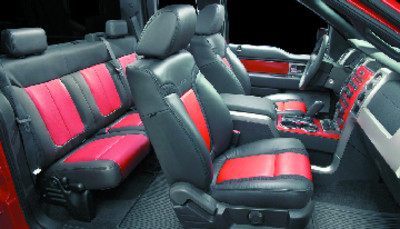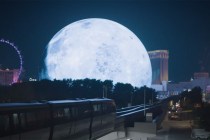Raptor inspired by race trucks
There are trucks dressed up to appear off-road-capable and then there's the real deal. Ford's SVT Raptor was designed, literally from the wheels up, to go where no other pickup dares to tread.
The last truck developed by Ford's Special Vehicles Team, SVT for short, was the F-150 Lightning. This muscular street beast with its 380-horsepower 5.4-liter supercharged V-8 could show its tailgate to most so-called high-performance machinery. And, by adding inexpensive aftermarket mods, an extra 100-plus horses were at the ready.
The rear-wheel-drive Lightning, with its foot-wide summer tires, was a blast to drive on paved roads, but was totally out of its element when venturing off any well-beaten path or in icy winter conditions.
Lightning production began in 2000 and ceased at the end of the 2003 model year, leaving Ford to concentrate on more conventional option packages for its popular full-size pickup.
The launch of the all-new 2009 F-150 opened up a new opportunity for SVT designers to apply a variety of modifications to this platform. The resulting extended-cab SVT Raptor, which goes on sale this spring, represents a culmination of their efforts: It's a truck that has been retasked to tackle severe off-road use, as opposed to tire-shredding acceleration.
How severe? Well, the Raptor's creators were influenced by the full-race F-150-based trucks that have successfully run in the Mexican Baja 1000 and similar off-road desert racing events.
The Raptor isn't exactly a full-spec competition brute, but it does arrive with standard four-wheel-drive, plus all the right boulder-hopping hardware and unique body bits that set it apart from regular-strength F-series models.
In front, the Ford name is spelled out in large block letters on an egg-crate grille that has been fitted with a trio of orange marker lights (plus two more on the fascia). The bumper is also unique to the Raptor, as are the functional hood and fender fresh-air vents. All of the trim is blacked out, adding to the truck's tough-customer posture.
The brightwork-devoid structure sits up nice and high with the help of a Raptor-specific suspension setup with special shock absorbers that stiffen as they compress to keep the truck from bottoming out or becoming too tippy while cornering. That's a particularly good idea, since there are more than 11 inches of suspension travel in front and around 13.5 inches in back. In addition, giant 35-inch-tall all-terrain rubber has been mounted on 17-inch wheels, which are now positioned farther outboard from the fenders to a point where the Raptor's width has been increased by more than 7 inches when compared to a standard F-150.
Early versions of Ford's four-wheeled predator will arrive with a slightly modified 5.4-liter V-8 rated at 320 horsepower and 390 pound-feet of torque (those numbers are slightly lower when burning ethanol-blended fuel). However, an all-new 6.2-liter V-8, rated at an estimated 400 horses and 400 pound-feet of torque will likely be available by this summer.
Both powerplants operate with a six-speed automatic transmission.
For $39,000, Raptor buyers will receive plenty of standard content in addition to trailer-sway and hill-descent control systems. Also standard is a switch that adjusts the throttle and transmission shift points to deliver added low-speed power during off-road driving excursions.
Options include multiadjustable leather seats, colorful interior trim and a slick exterior graphics package that simulates mud splashed along the side of the truck, should you not already have enough.
As this is the first SVT product designed to perform with equal competency on the road as well as in the deep rough, Ford set up a special Southern California desert test facility that replicates the extremely harsh Baja race course. The thinking here is that if the Raptor can survive that kind of punishment, it should do just fine hauling the kids to the mall along with handling more daunting and deep-rutted backwoods excursions.
As such, the SVT folks, as they did with the Lightning, have designed the Raptor as a machine that lives up to its intended purpose. Unlike the Lightning, however, that purpose includes a much broader range of capabilities, which will mean more buyers.















